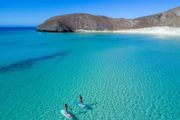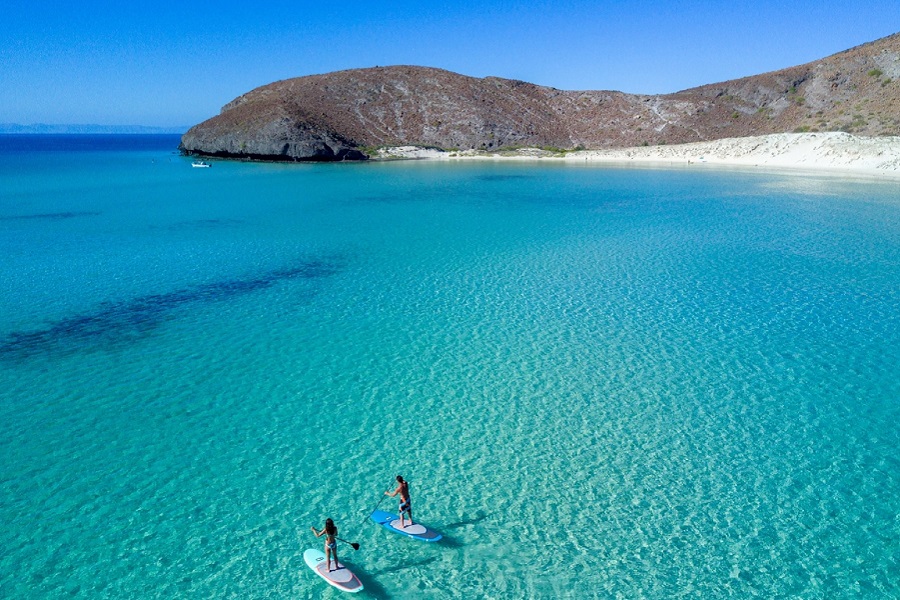Find the best turnkey options in Cabo
humberto@yourcabohome.com 52 1 624 147 7708



Named in honor of Spanish conquistador Hernán Cortés (Cortez) by Francisco de Ulloa in 1539, the Sea of Cortez supports over 900 varieties of fish. Also, it supports more than 2,000 species of marine invertebrates. On top of that, the Sea of Cortez is home to many endemic species, which are creatures that only exist there, and nowhere else on Earth.
You’ll find many sea creatures, the largest of which are the migratory whales. And, these whales include humpbacks, California grays, and even orcas or killer whales. Then, you’ll find giant whale sharks peacefully feeding on plankton. Swimming next to these gentle creatures is an experience of a lifetime.
Next, find smaller sea creatures in the Sea of Cortez like dolphins, sea turtles, sea lions, tuna, sea bass, grouper, yellowtail, shark, marlin, scallops, lobster, snapper, shrimp and more. Wow, that was quite a list. These underwater creatures make snorkeling very exciting indeed.
Now, read on to learn all about this magnificent body of water.
Did you know that the northern part of the Sea of Cortez almost became a United States sea port back in the 19th century?
This is what happened…
After the Mexican-American War (1846 to 1848), when negotiations were underway with then Mexican President, Antonio Lopez de Santa Ana, the land at the northern part of The Sea of Cortez was up for grabs. And, before the Gadsden Purchase in 1854, which gave the U.S. the southern portions of Arizona and New Mexico, President Antonio Lopez fought hard to keep the land that separated mainland Mexico from the Baja California peninsula. In the end, the U.S. allowed Mexico to keep this land bridge, which included the bustling metropolis of Mexicali.
The French environmentalist Jacques Cousteau once described Mexico’s Sea of Cortez, also known as the Gulf of California, as “the world’s aquarium.” It’s the combination of the temperate waters to the north of the gulf and tropical, warmer waters to the south that create incredibly productive waters. In fact, they have led to comparisons to the Galapagos Islands. Swimming beneath the surface, see whale sharks, bull sharks, hammerheads, manta rays, dolphins, schools of tuna and an abundance of other species.
Jacques Cousteau was a French oceanographer, researcher, filmmaker, and undersea explorer. He was arguably the most famous undersea explorer of modern times. Cousteau was born on June 11, 1910 in Saint-André-de-Cubzac, Gironde, France. He was the younger of two sons and suffered from stomach problems and anemia as a young child. At age 4 he learned to swim. This started him on a lifelong fascination with water.
He attended a boarding school in Alsace, France and then completed his preparatory studies at the Collège Stanislas in Paris. In 1930 he entered the French Navy and graduated as a gunnery officer. After graduation, he joined the French Navy’s information service. He had a keen interest in photography, and this gave him an opportunity to shoot film at exotic ports-o-call in the Indian and Pacific Oceans.
In 1933, Jacques Cousteau nearly lost his life in a serious automobile accident. During his rehabilitation, he began swimming in the Mediterranean Sea to strengthen his weak limbs. A friend gave him a pair of swimming goggles, which opened his eyes to the wonders of the sea. In 1937 he married Simone Melchior. They had two sons, Jean-Michel and Phillipe, both of whom would eventually join their father in his underwater expeditions.
Jacques Cousteau inspired an entire generation to take a deep interest in the deep sea, and his legacy has continued to influence modern oceanography (his grandson, Fabien Cousteau, is currently building PROTEUS, which he calls “the world’s most advanced underwater scientific research station and habitat to address humanity’s most critical concerns: medicinal discoveries, food sustainability, and the impacts of climate change”). But there’s so much more to Cousteau than his signature red hat and television persona — here are some facts to get you up to speed.
Don’t miss your opportunity to watch some of the largest creatures on Earth in their natural habitat. Read on and learn how to get the most out of your Cabo whale watching experience. If you’re planning a trip to Cabo San Lucas during the winter or early spring, you’re coming at the perfect time to schedule a Cabo whale watching tour. To be specific, the best months for Cabo whale watching are December to April.
The gulf is a protected UNESCO World Heritage Site. As a result, many organizations work assiduously to preserve it. Today, the amazing Sea of Cortez provides fun, excitement, and adventure to all who explore it, both above the water and below.
When it comes to bodies of water, there is a lot of hype about the Sea of Cortez. Situated on Mexico’s western coast in between the mainland and the Baja California Peninsula, it is known as both a home to the most vast array of aquatic creatures on the planet and a haven for those who like to adventure into the depths of the unknown.
Interestingly, the Sea of Cortez is known to be the youngest sea on Earth.
Next, uncover all there is to know about Los Cabos Mexico and beyond.